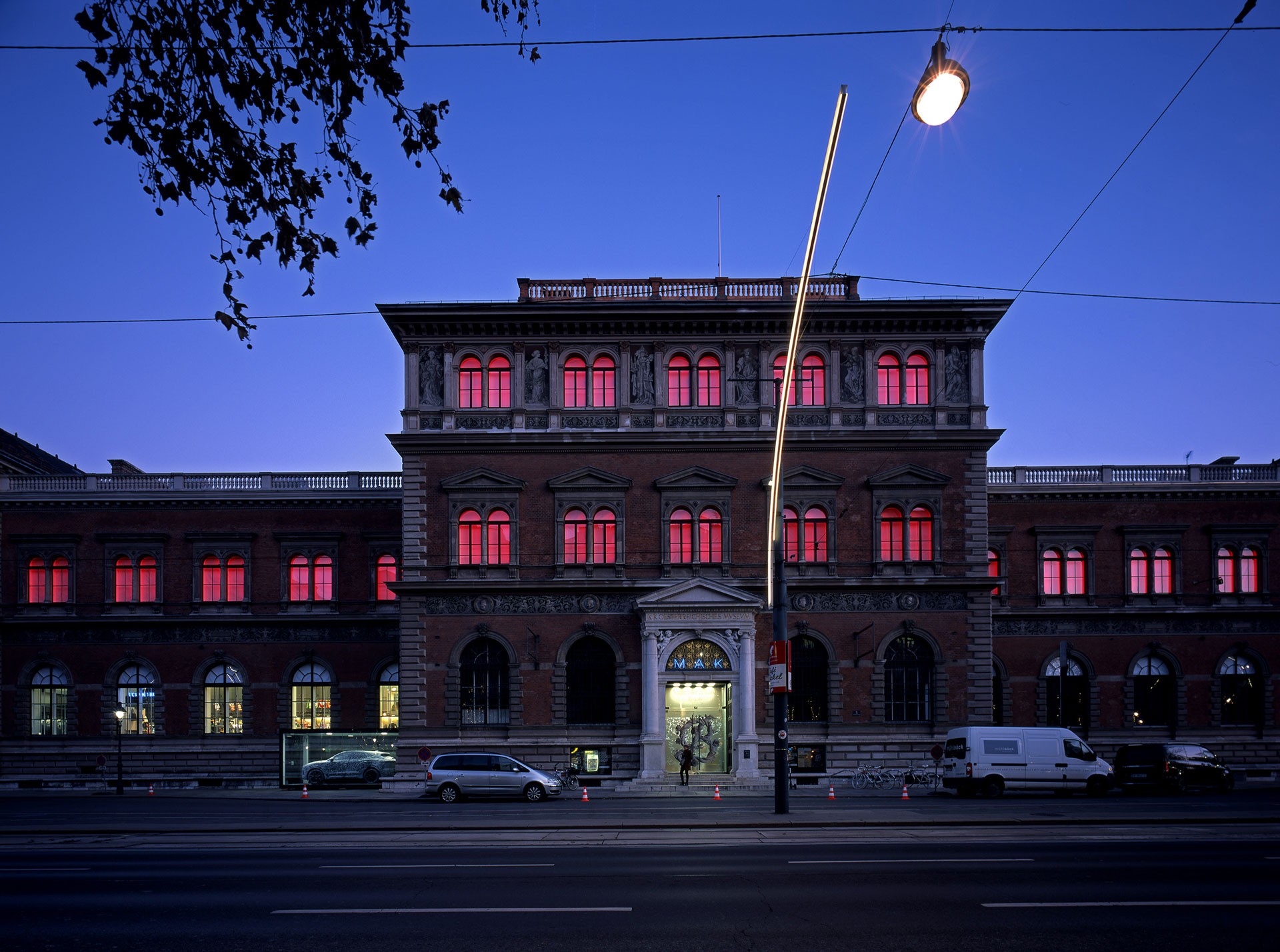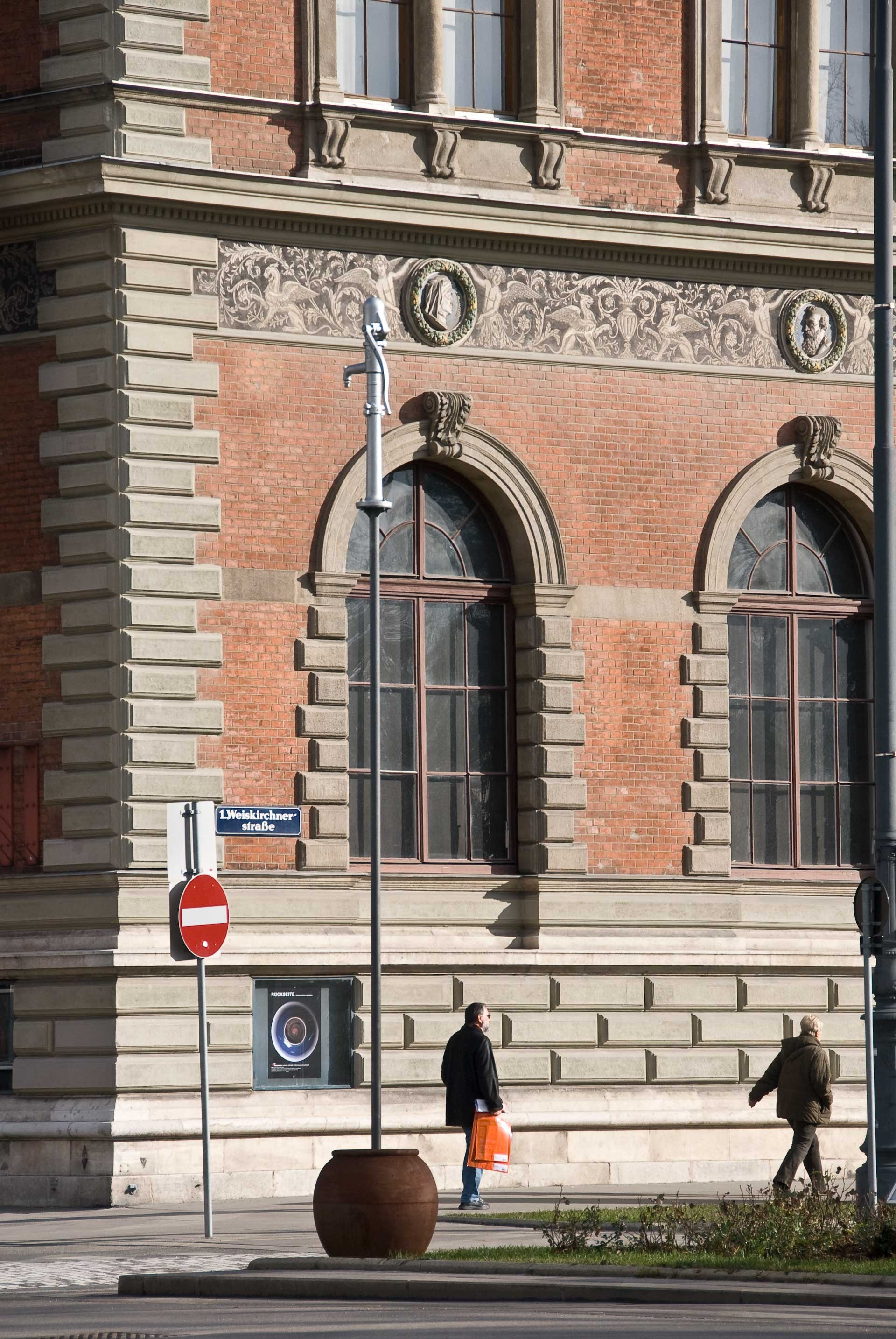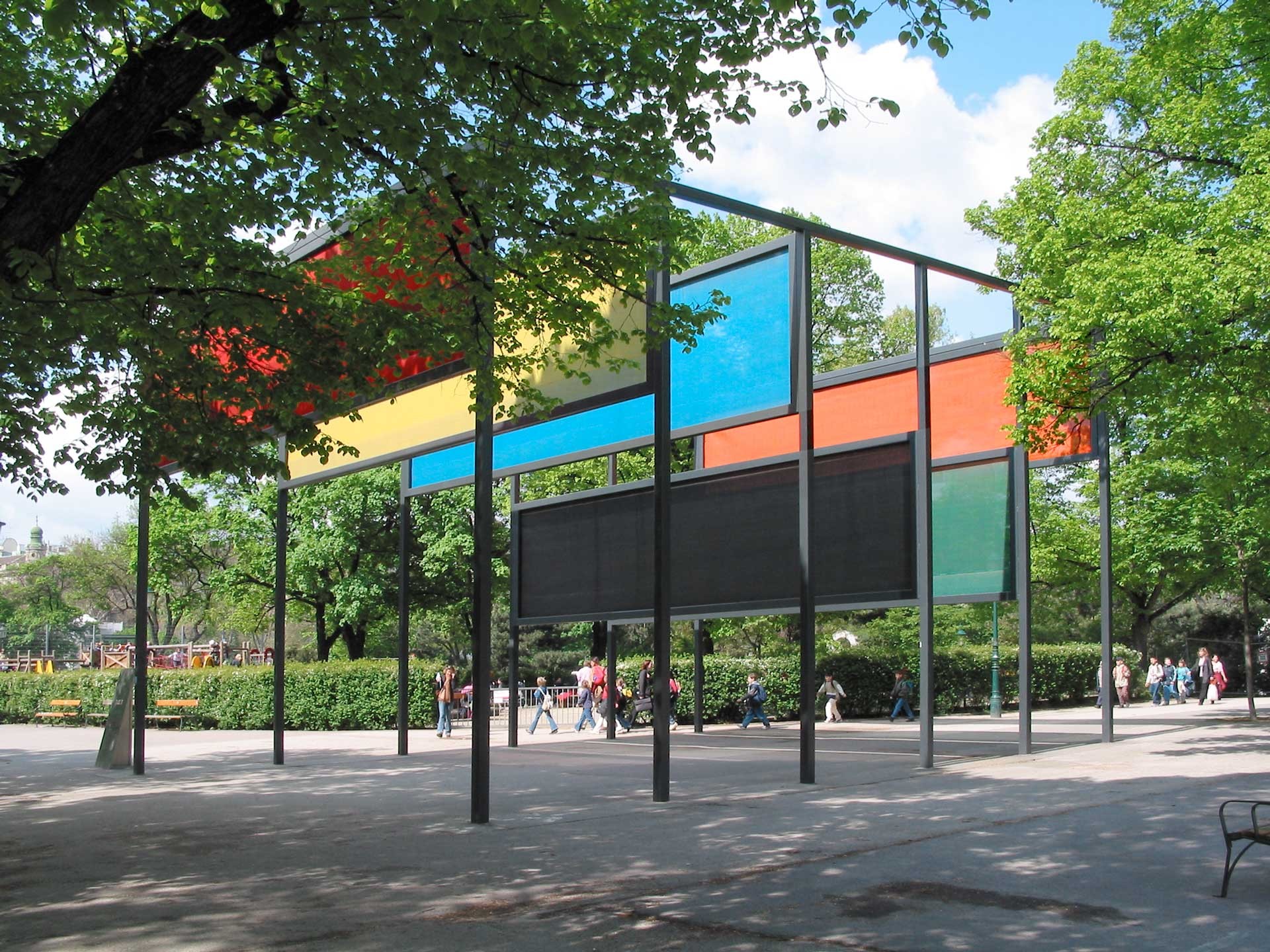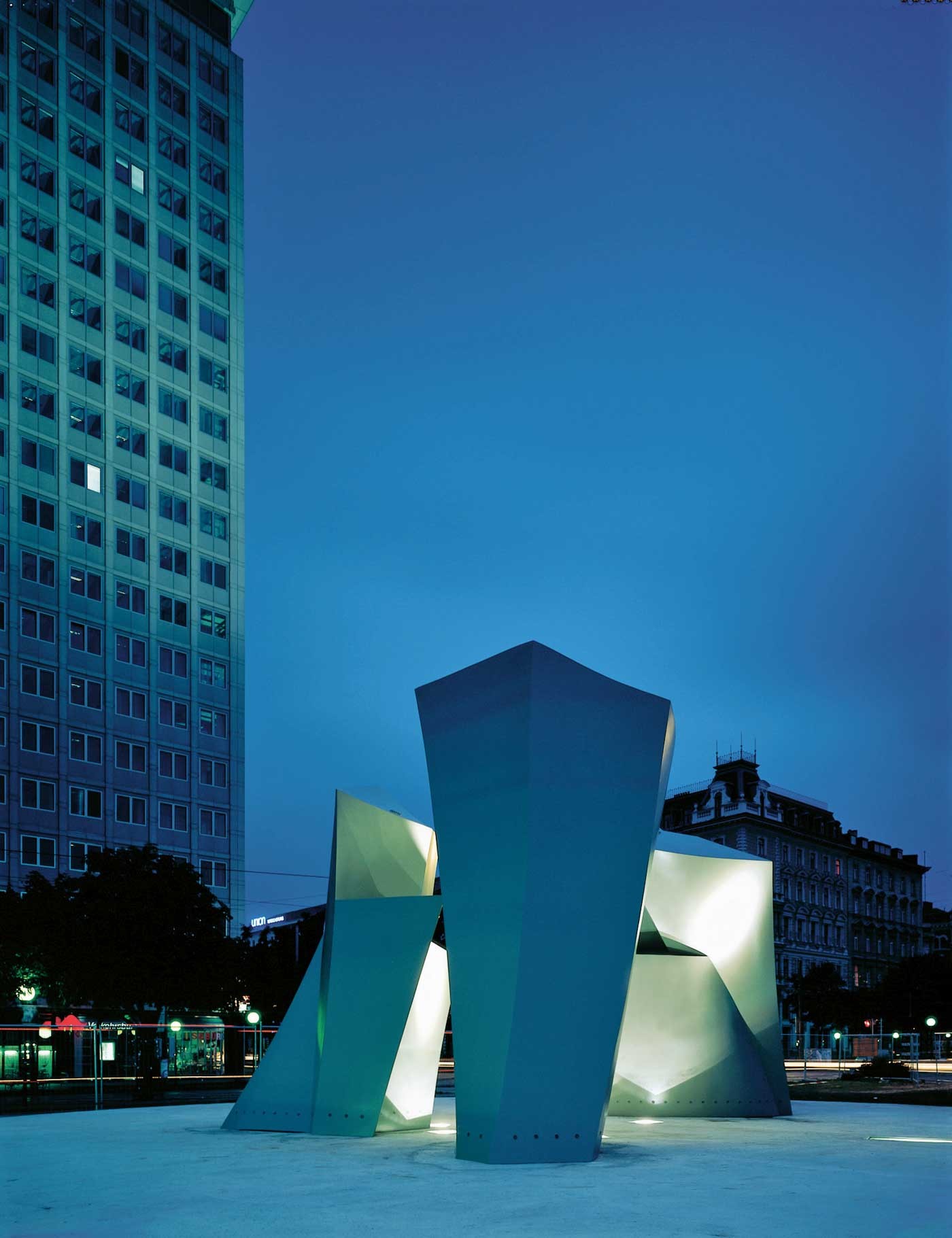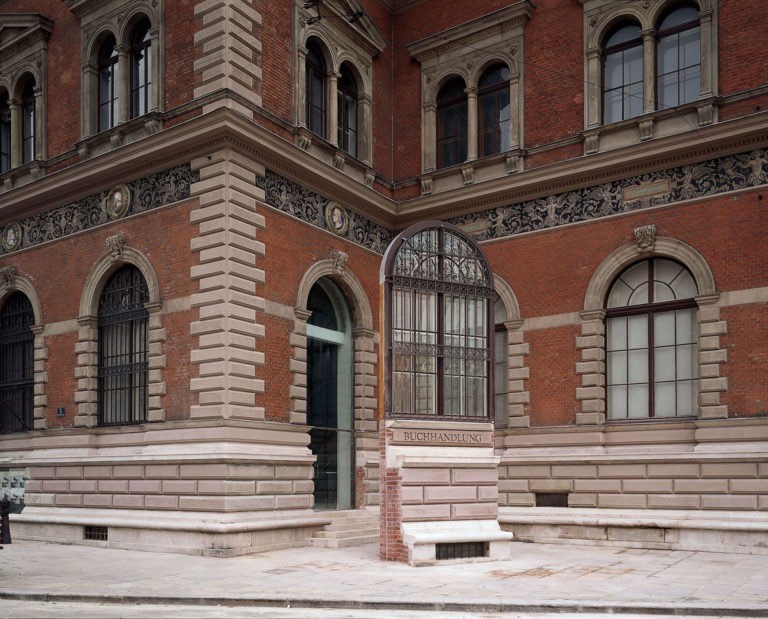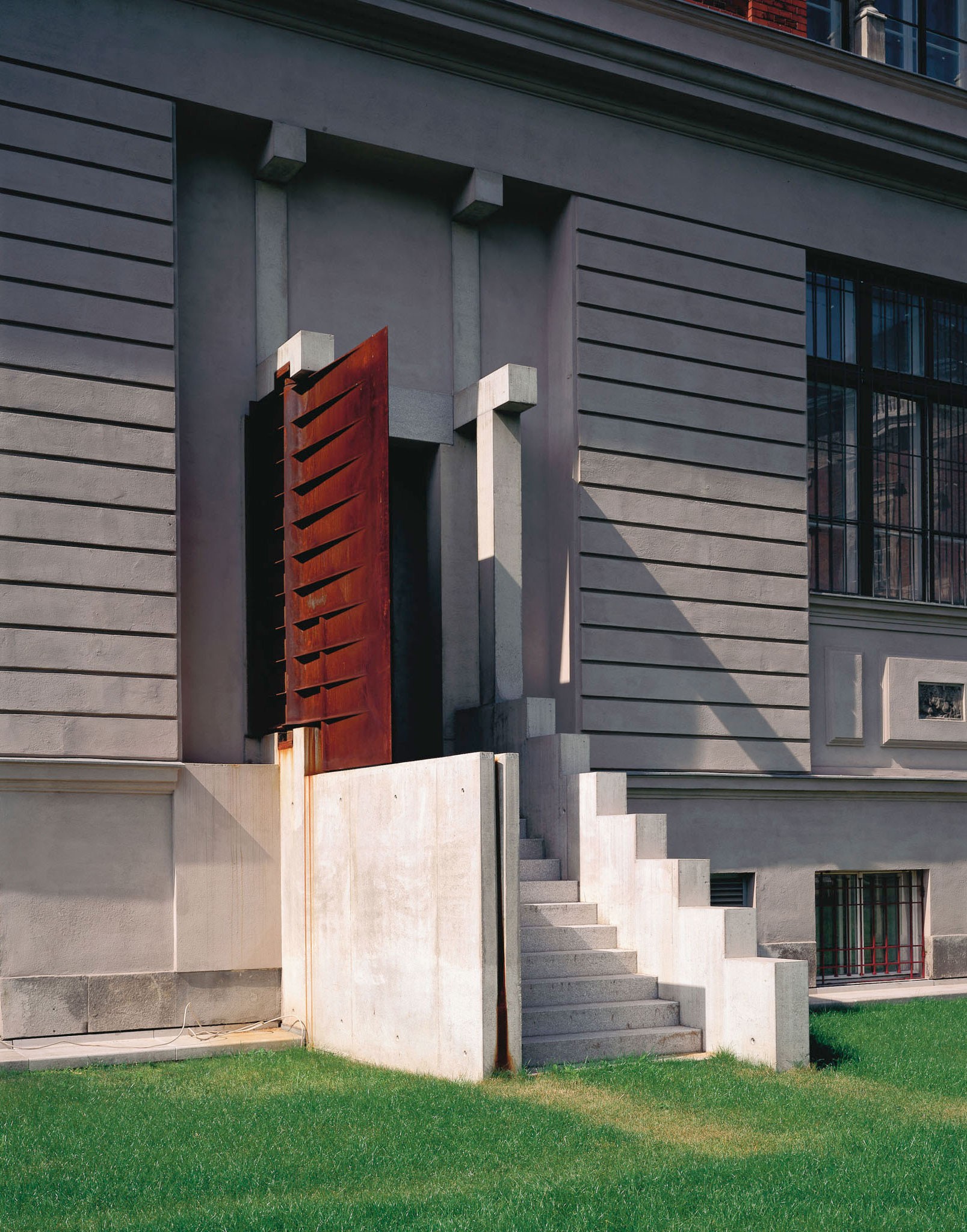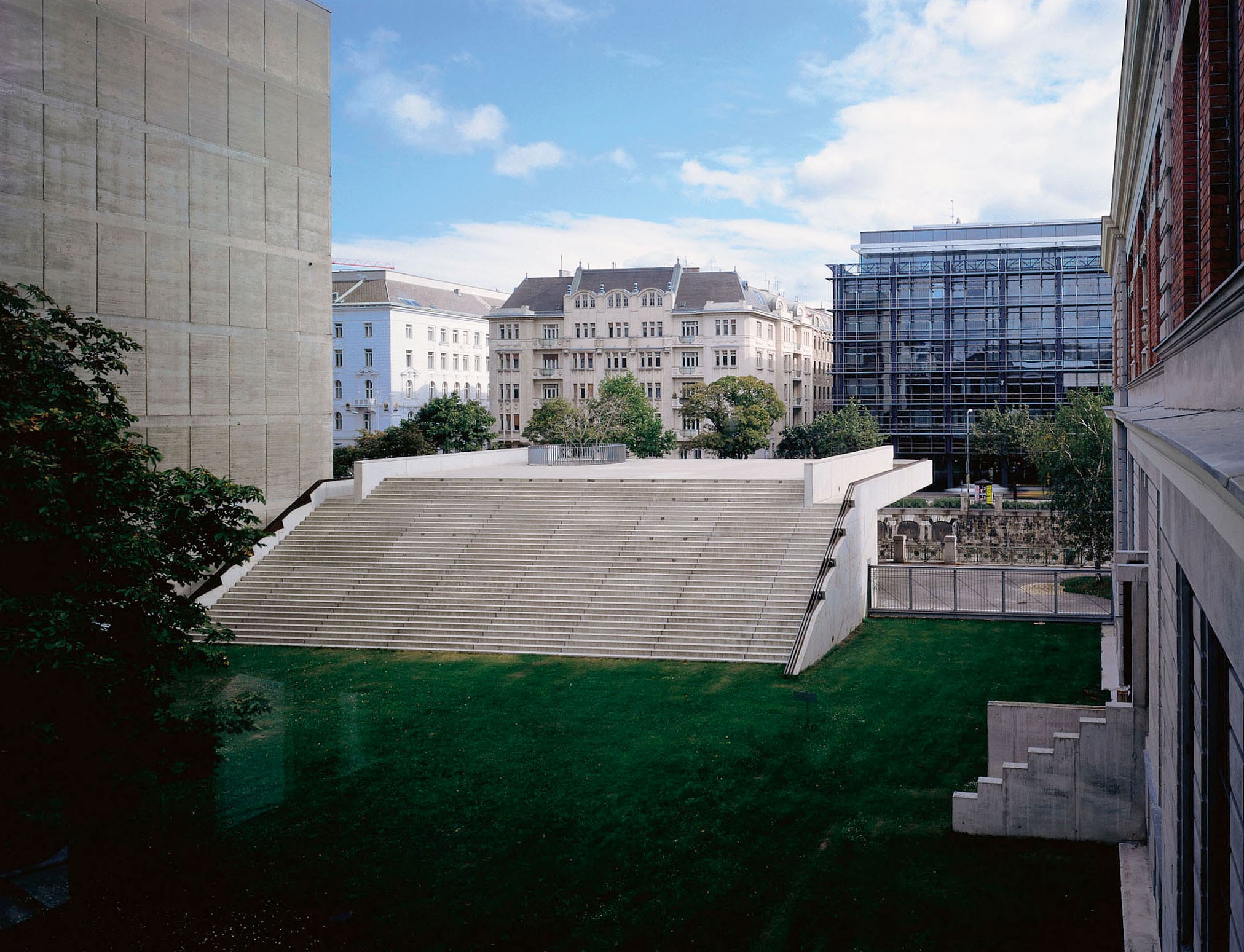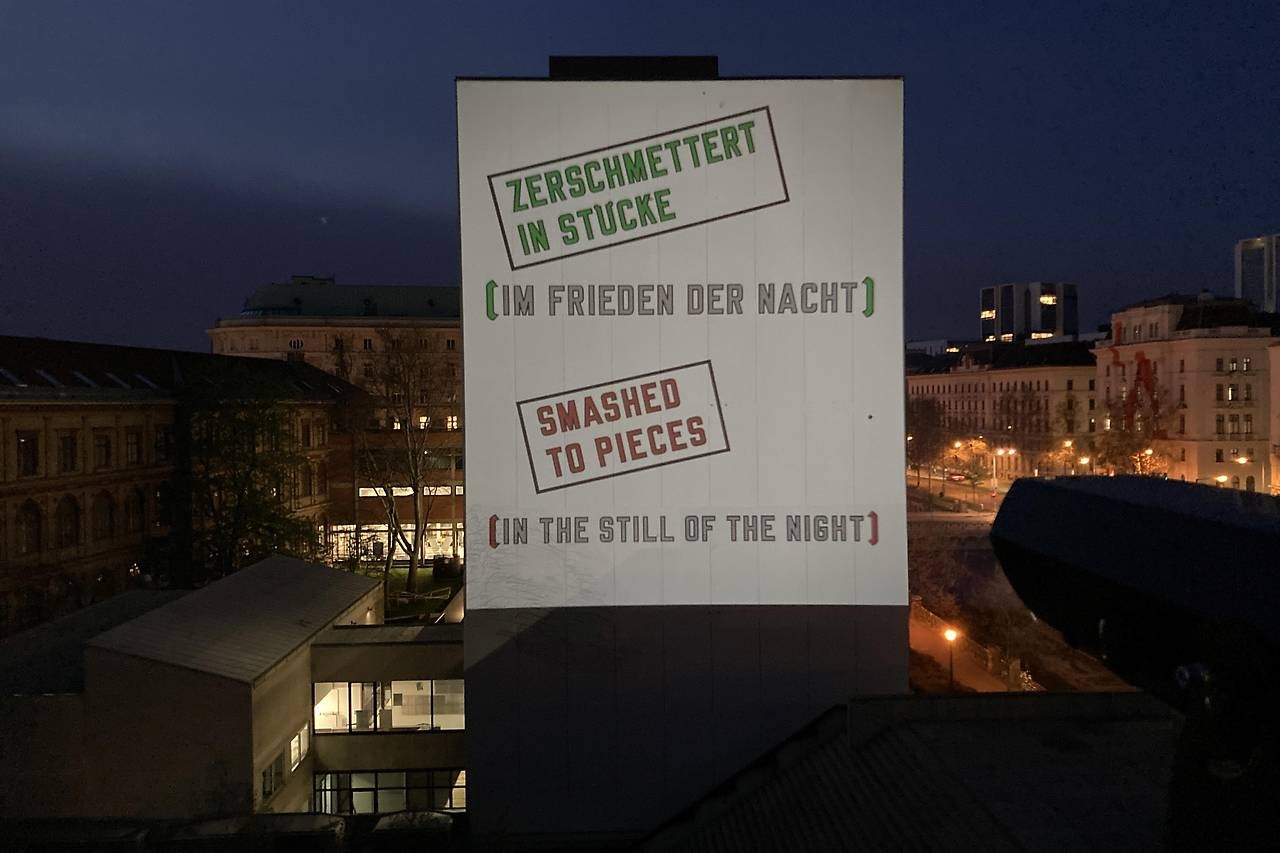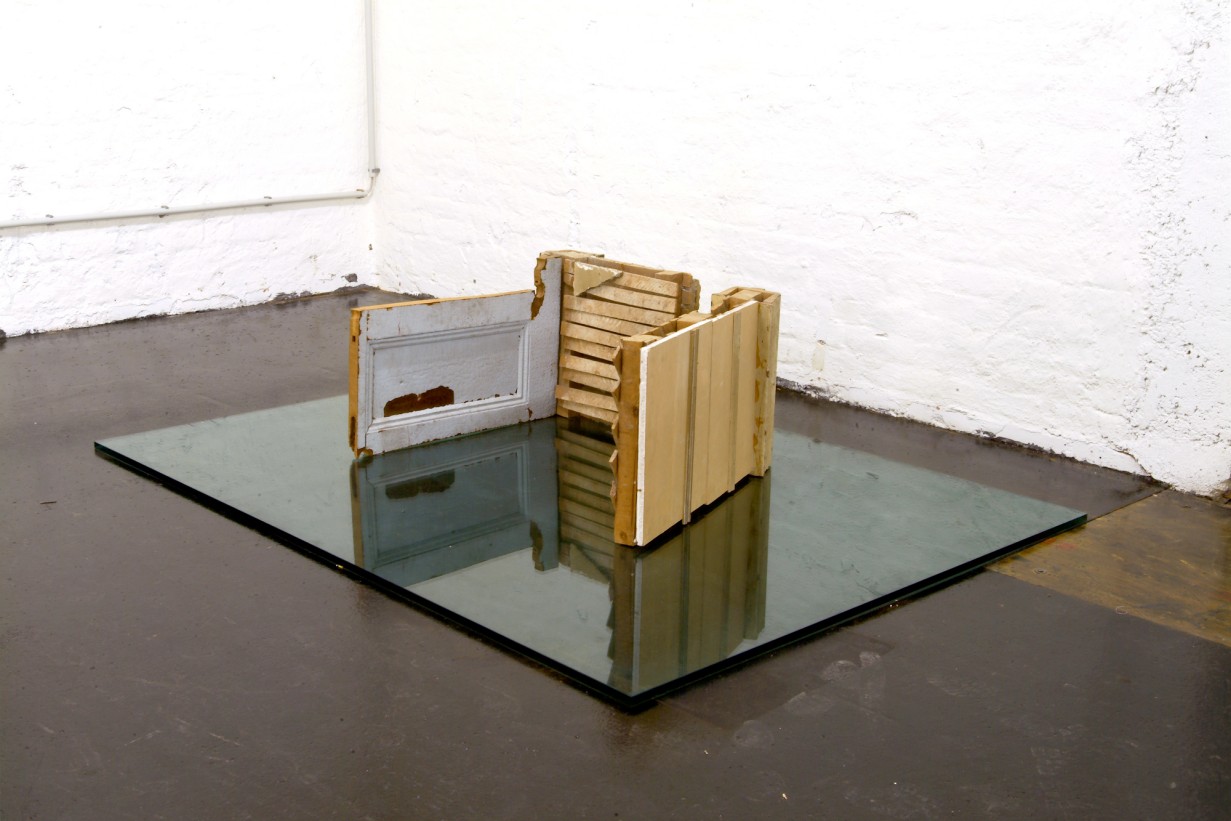
Art in Public Space
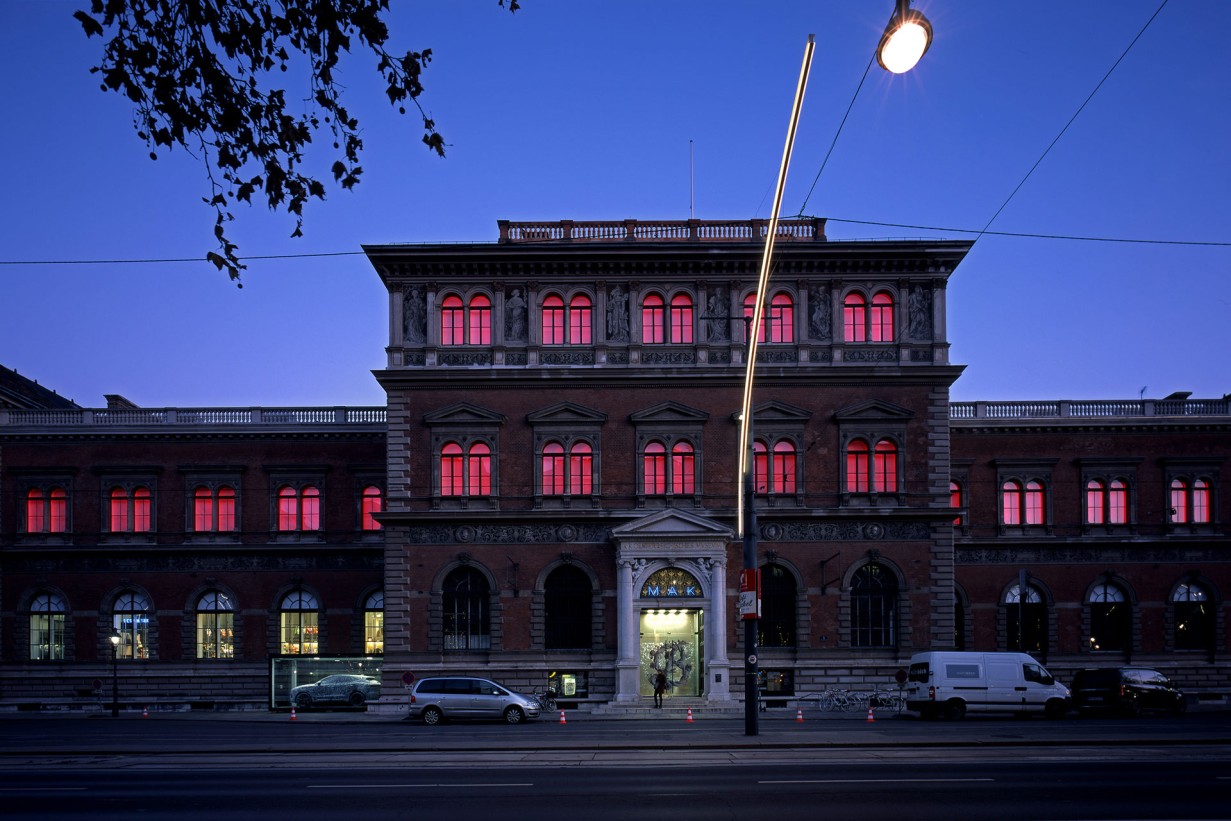
© Gerald Zugmann/MAK
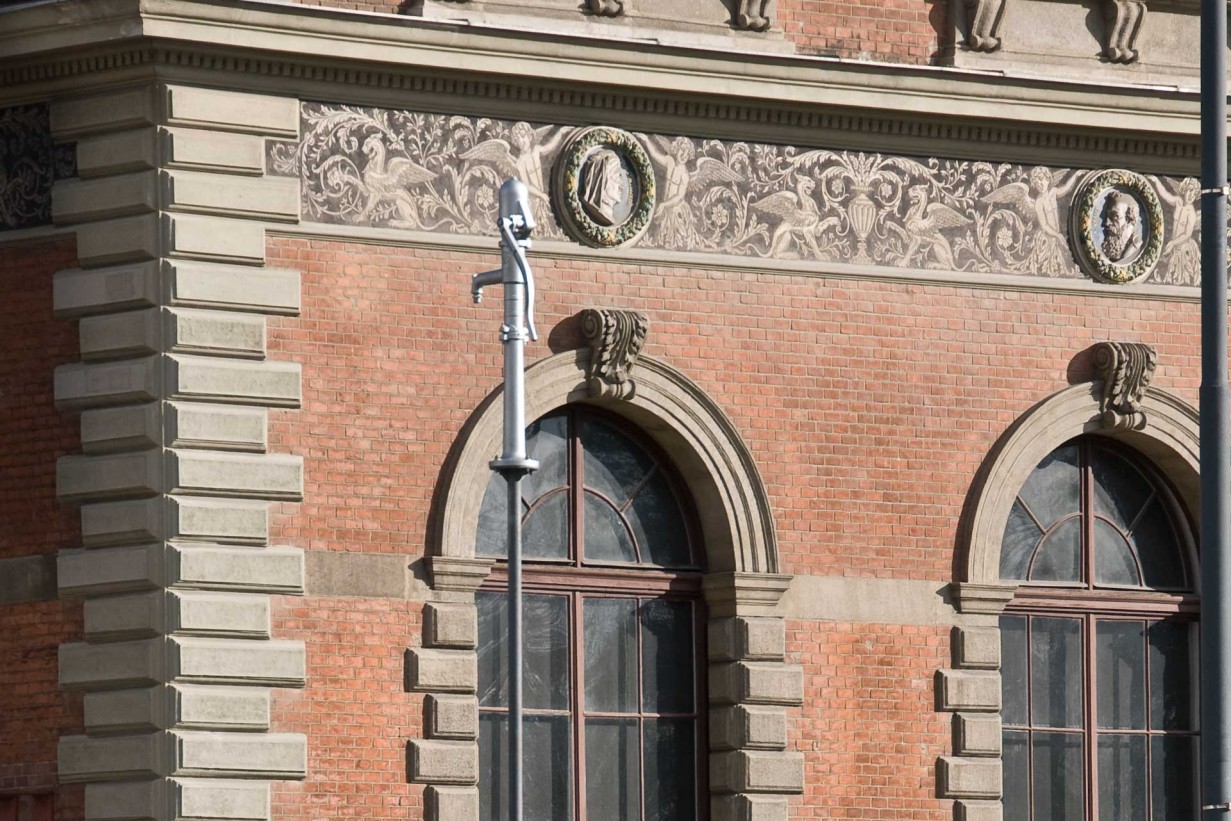
© MAK/Georg Mayer
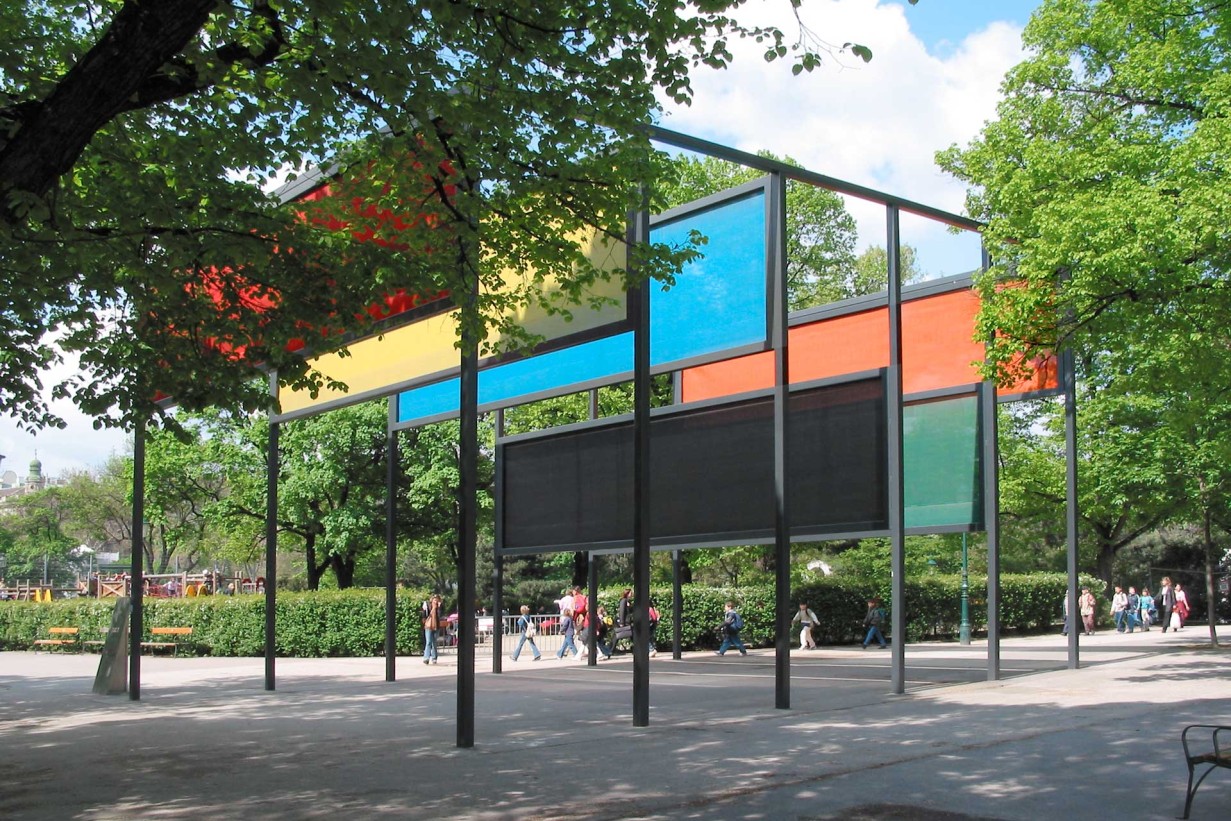
© Gerald Zugmann/MAK
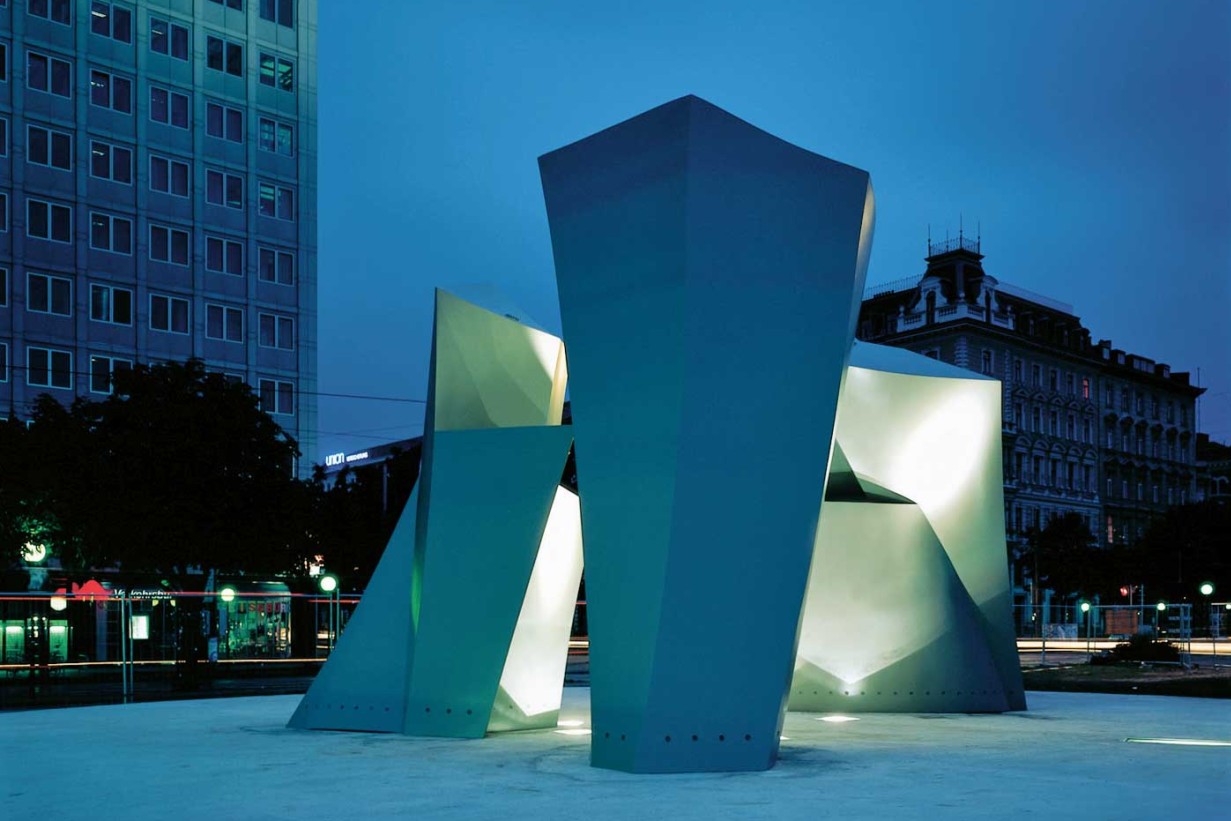
© Gerald Zugmann/MAK
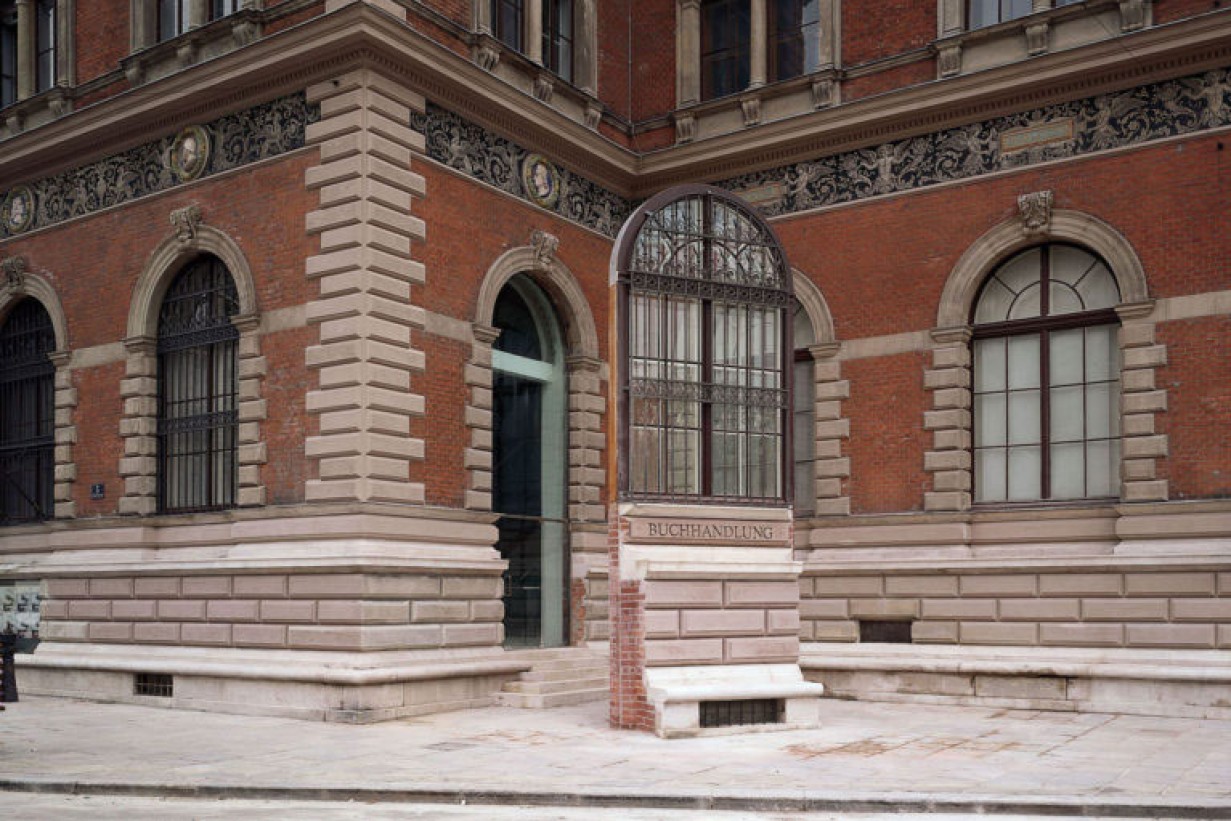
© Gerald Zugmann/MAK
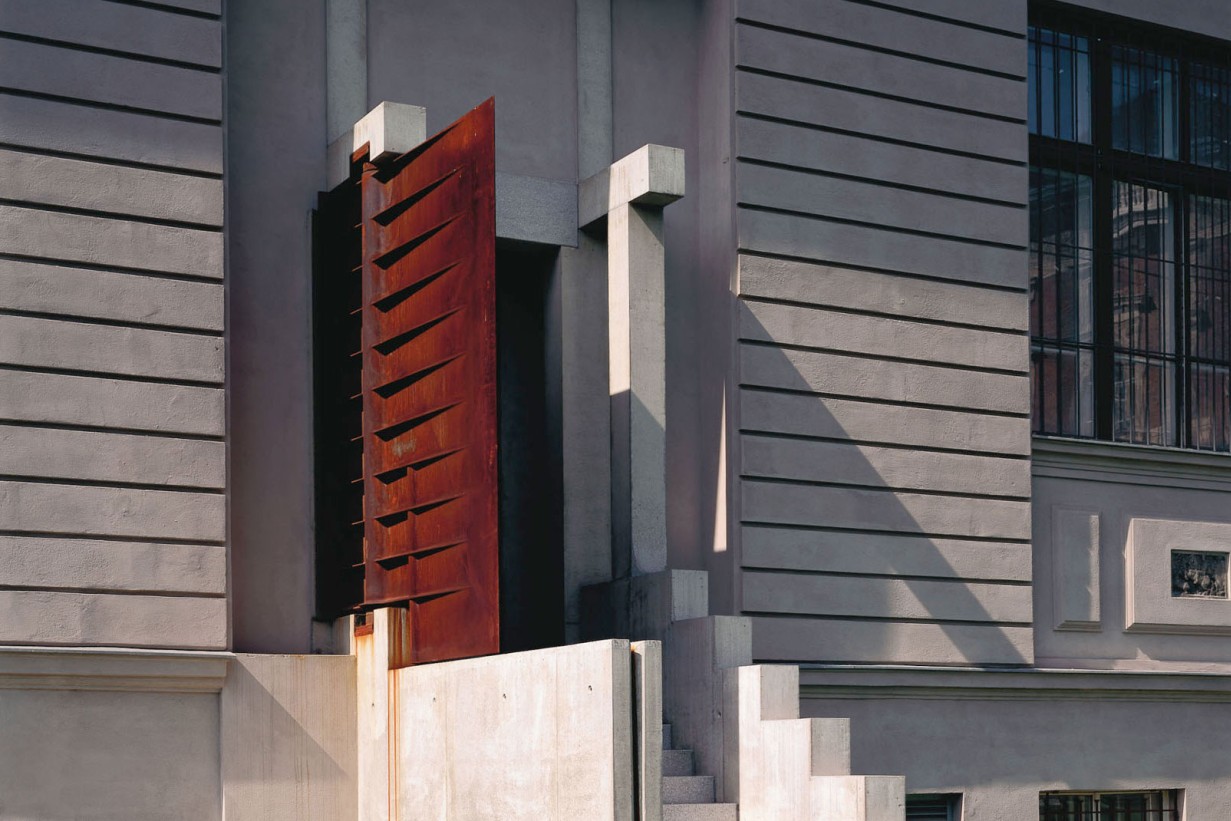
© Gerald Zugmann/MAK
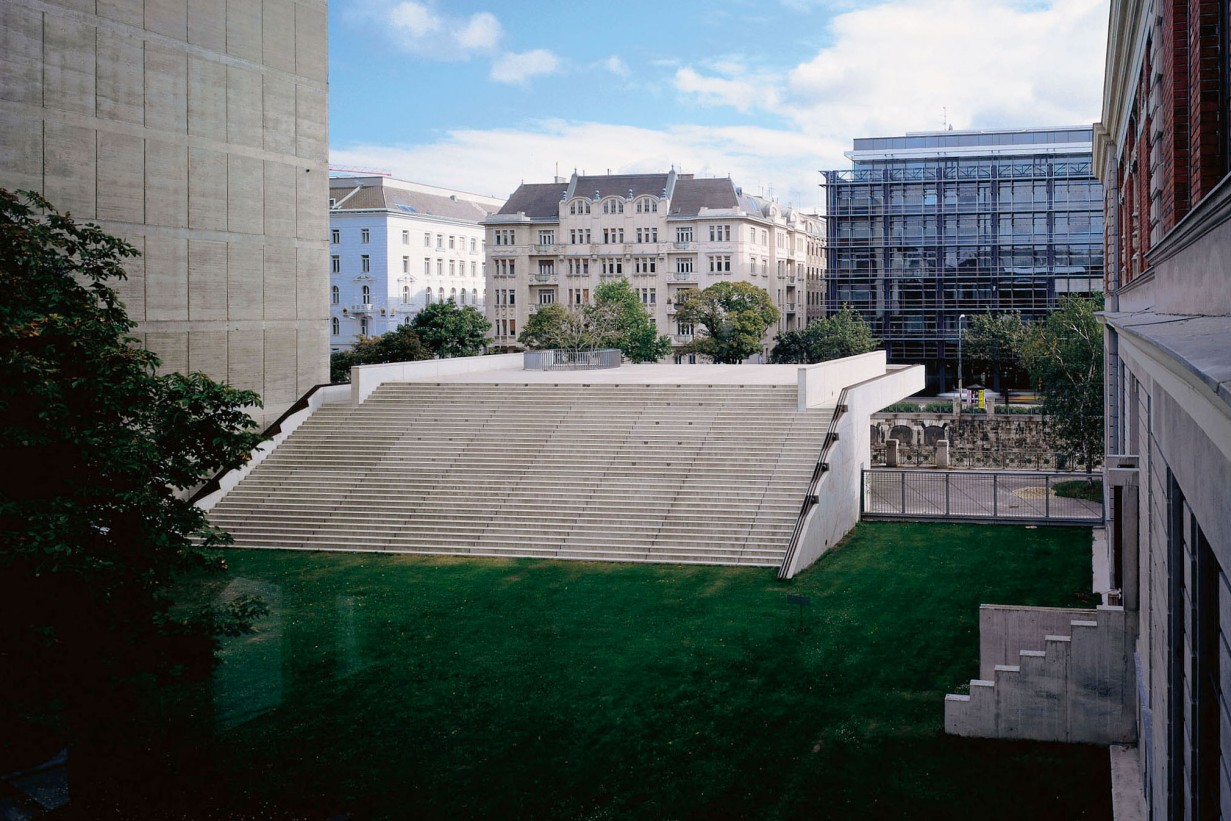
© Gerald Zugmann/MAK
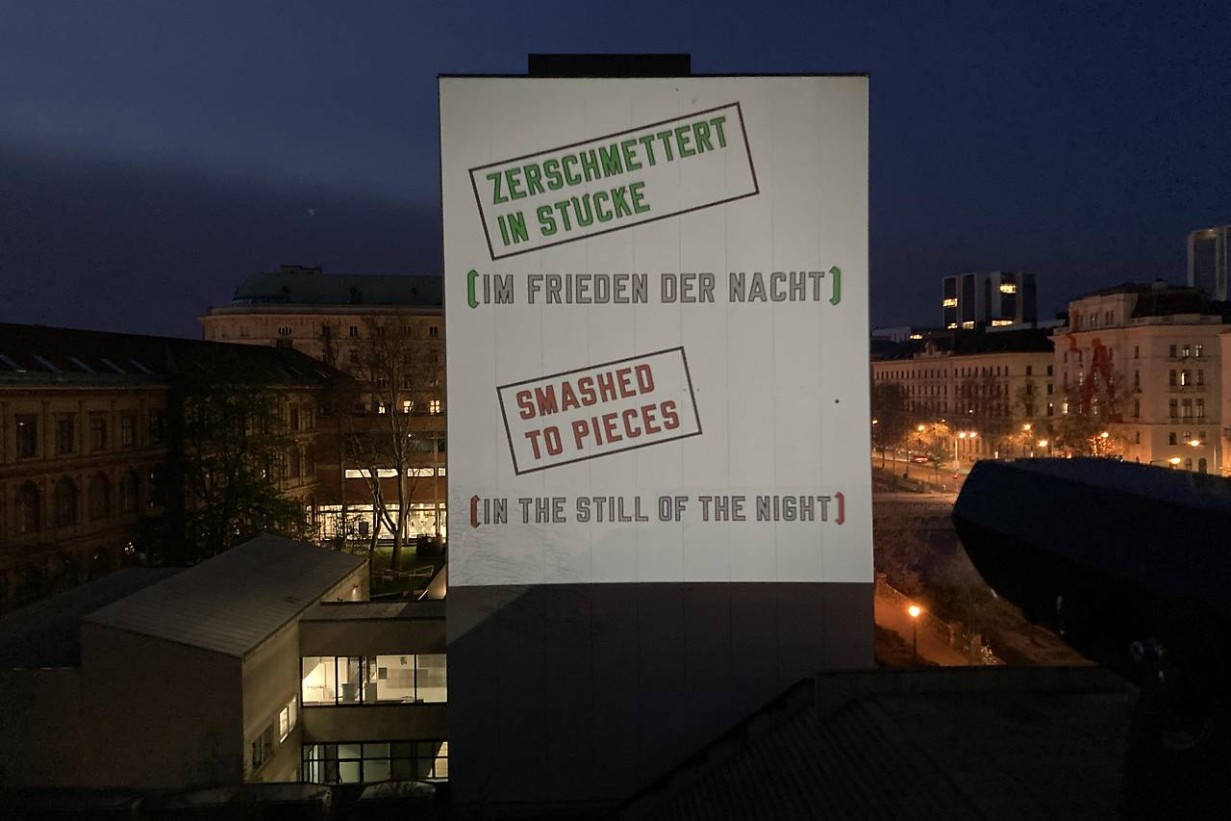
© Hans Holler/Paul Wünsche/MAK
Previous Image
James Turrell, MAKlite
In James Turrell’s permanent installation MAKlite, intensive light pulsates in the windows of the MAK. With the unreality of a dream, the brick façade loses its static solidity, appearing as a shimmering, translucent membrane that hints, wordlessly but emphatically, of transfers being made: by means of this inner radiance, the MAK communicates to its urban surroundings the complex proceedings being effected within. Permanent installation on the façade of the MAK since 2004
Stubenring 5
1010 Vienna
More on the installtion
More on the installtion
Michael Kienzer, Stylit
In his piece Stylit, Michael Kienzer addresses the subject of sculpture in the public sphere: he interprets space as an archive of objects, which he juxtaposes with an elongated vertical sculpture which, however, unlike all other urban furnishing objects and elements, is marked by perplexing differences. On the end of a several meter long rod or pipe, which grows out of a pot-like pedestal, he mounts a well pump which—unreachable for pedestrians passing by—sits at the height of the treetops and street lights. Using simple tools and everyday (ready-made) materials, Michael Kienzer repeatedly succeeds anew in breaking up perceptual patterns and creating shrewdly differentiated spatial situations. Stylit was created for the exhibition Michael Kienzer. New Properties
Stubenring 5
1010 Vienna
Donald Judd, Stage Set
Donald Judd's Stage Set is the expression of an uncompromising vision situated between art and architecture. Six panels made from differently colored strips of fabric are mounted at differing heights within a steel framework of 7.5 x 10 x 12.5 m. These panels rhythmize the open space and visualize serializations and processes that are characteristic of Judd's work Donald Judd developed Stage Set for the MAK in 1991 on the occasion of his exhibition Architecture. The installation was gifted to the city of Vienna in 1995, and it has stood in Vienna’s Stadtpark since 1996.
Stadtpark
1030 Vienna
Philip Johnson, Wiener Trio
Philip Johnson's Wiener Trio was installed at the intersection of Franz-Josefs-Kai and Schottenring in 1998. Each element of the tripartite object has a sculptural character of its own. Seen together, however, they represent a kind of architecture, reflecting the American architect's longstanding and intense exploration of monumentality. Philip Johnson developed this object in 1996 for a MAK exhibition entitled Turning Point. The installation of this extraordinary object in the public space was made possible through the generous support of the insurance company Wiener Städtische Allgemeine Versicherungs AG.
Franz-Josefs-Kai/Schottenring (across the street from the Ringturm)
1010 Vienna
James Wines/SITE, Tor zum Ring [Gate to the Ring]
Walter Pichler, Tor zum Garten [Gate to the Garden]
Stubenring 5
MAK Terrace Plateau
James Wines/SITE, Tor zum Ring [Gate to the Ring]
Directly in front of the Stubenring building is the Tor zum Ring [Gate to the Ring] constructed by James Wines/SITE in 1992, which physically shifts a piece of the building's outer wall into the urban space, leaving behind a new point of access to the museum.
Stubenring 5
1010 Vienna
Walter Pichler, Tor zum Garten [Gate to the Garden]
A counterpart to this is Walter Pichler’s artistic and architectural intervention Tor zum Garten [Gate to the Garden] (1990), which opens the museum to its garden on the other side.
Stubenring 5
1010 Vienna
MAK Terrace Plateau
Also in the MAK Garden is the MAK Terrace Plateau, constructed between 1991 and 1993 after a design by Peter Noever; it is oriented toward the Wien River and provides the museum with a further architectonic axis.
Stubenring 5
1010 Vienna
Lawrence Weiner, Smashed to Pieces (In The Still Of The Night) / Zerschmettert in Stücke (Im Frieden der Nacht).
The MAK projects the linguistic sculpture, whose German-language version is by Austrian writer Ferdinand Schmatz, onto the firewall of the Schwanzer Wing of the University of Applied Arts Vienna after dark.
Stubenring 5
1010 Vienna
Media
Related

